
Dragoons were originally a class of mounted infantry, who used horses for mobility, but dismounted to fight on foot. From the early 17th century onward, dragoons were increasingly also employed as conventional cavalry and trained for combat with swords and firearms from horseback. While their use goes back to the late 16th century, dragoon regiments were established in most European armies during the 17th and early 18th centuries; they provided greater mobility than regular infantry but were far less expensive than cavalry.
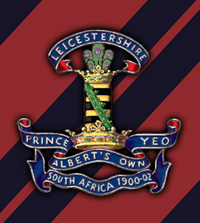
The Leicestershire Yeomanry (Prince Albert's Own) was a yeomanry regiment of the British Army, first raised in 1794 and again in 1803, which provided cavalry and mounted infantry in the Second Boer War and the First World War and provided two field artillery regiments of the Royal Artillery in the Second World War, before being amalgamated with the Derbyshire Yeomanry to form the Leicestershire and Derbyshire (Prince Albert's Own) Yeomanry in 1957. The regiment's lineage is currently perpetuated by E (Leicestershire and Derbyshire Yeomanry) Squadron of the Royal Yeomanry.
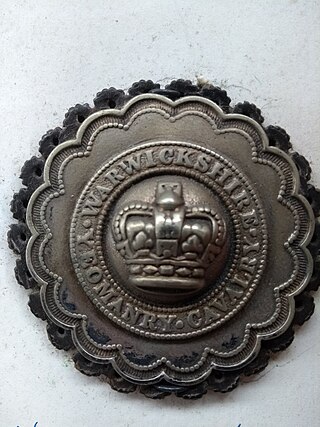
The Warwickshire Yeomanry was a yeomanry regiment of the British Army, first raised in 1794, which served as cavalry and machine gunners in the First World War and as a cavalry and an armoured regiment in the Second World War, before being amalgamated into the Queen's Own Warwickshire and Worcestershire Yeomanry in 1956. The lineage is maintained by B Squadron, part of The Royal Yeomanry.
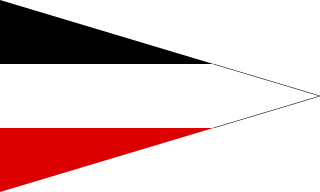
The Guards Cavalry Division (Garde-Kavallerie-Division) was a unit of the Prussian Army that was stationed in Berlin. The division was a part of the Guards Corps (Gardekorps).

The Northumberland Hussars was a Yeomanry regiment of the British Army, transferred to the Royal Artillery for the duration of the Second World War. It was disbanded as an independent Territorial Army unit in 1967, a time when the strength of the Territorial Army was greatly reduced. The regiment's name lives on in the title of the command and support squadron of the Queen's Own Yeomanry (QOY), a Formation Reconnaissance Regiment based in Newcastle upon Tyne.

The Queen's Own Oxfordshire Hussars (QOOH) was a Yeomanry Cavalry regiment of the British Army's auxiliary forces, formed in 1798. It saw service in the Second Boer War with 40 and 59 Companies of the Imperial Yeomanry and was the first Yeomanry regiment to serve in Belgium and France during the Great War. After almost four years of Trench warfare on the Western Front, where cavalry had been superfluous, the QOOH led the advance during the Allies' victorious Hundred Days Offensive in 1918. In 1922, the QOOHt became part of the Royal Artillery and during World War II it served as anti-tank gunners at Singapore and in North West Europe. After a series of postwar mergers and changes of role, the regiment's lineage is maintained by 142 Vehicle Squadron, Royal Logistic Corps.
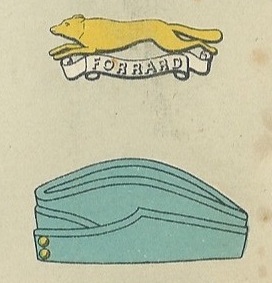
The East Riding of Yorkshire Yeomanry was a unit of the British Army formed in 1902. Units of Yeomanry Cavalry were raised in the East Riding of Yorkshire in the 18th and early 19th centuries at times of national emergency: the Jacobite Rising of 1745, the French Revolutionary Wars and the Napoleonic Wars. These were stood down once each emergency was over. The East Riding of Yorkshire Yeomanry, was established in 1902, and this saw action during the First World War both in the mounted role and as machine gunners.
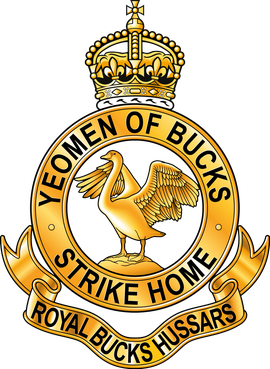
The Royal Buckinghamshire Yeomanry is an Operational Hygiene Squadron of the Royal Logistic Corps, originally formed as cavalry in 1794, and has also served in artillery and signals roles. The lineage is continued by 710 Operational Hygiene Squadron, Royal Logistic Corps.

The 2nd Cavalry Division was a unit of the German Army in World War I. The division was formed on the mobilization of the German Army in August 1914. The division was disbanded in 1919 during the demobilization of the German Army after World War I.

The 9th Cavalry Division was a unit of the German Army in World War I. The division was formed on the mobilization of the German Army in August 1914. The division was dissolved in March 1918.

The 7th Cavalry Division was a unit of the German Army in World War I. The division was formed on the mobilization of the German Army in August 1914. The division was disbanded in 1919 during the demobilization of the German Army after World War I.

The 6th Cavalry Division was a unit of the German Army that fought on Eastern and Western Fronts during World War I. The division was formed on the mobilization of the German Army in August 1914 and was disbanded in 1919 during the demobilization of the German Army after World War I.

The 4th Cavalry Division was a unit of the German Army in World War I. The division was formed on the mobilization of the German Army in August 1914. The division was disbanded in 1919 during the demobilization of the German Army after World War I.
The history of the German Cavalry in World War I is one of an arm in decline.
The VIII Corps of the Grande Armée was a French military unit that existed during the Napoleonic Wars. Emperor Napoleon I formed it in 1805 by borrowing divisions from other corps and assigned it to Marshal Édouard Mortier. Marshal André Masséna's Army of Italy was also reorganized as the VIII Corps at the end of the 1805 campaign. The corps was reformed for the 1806 campaign under Mortier and spent the rest of the year mopping up Prussian garrisons in western Germany.

The British cavalry were the first British Army units to see action during the First World War. Captain Hornby of the 4th Dragoon Guards is reputed to have been the first British soldier to kill a German soldier, using his sword, and Corporal Edward Thomas of the same regiment is reputed to have fired the first British shot shortly after 06:30 on 22 August 1914, near the Belgian village of Casteau. The following Battle of Mons was the first engagement fought by British soldiers in Western Europe since the Battle of Waterloo, ninety-nine years earlier. In the first year of the war in France, nine cavalry brigades were formed for three British cavalry divisions. Other regiments served in six brigades of the two British Indian Army cavalry divisions that were formed for service on the Western Front. Three regiments also fought in the campaign in Mesopotamia, the only other theatre of the First World War where British cavalry served.

The British yeomanry during the First World War were part of the British Army reserve Territorial Force. Initially, in 1914, there were fifty-seven regiments and fourteen mounted brigades. Soon after the declaration of war, second and third line regiments were formed. However, the third line regiments were soon absorbed into the Cavalry Reserve Regiments, to supply replacements for the cavalry and yeomanry. Other horsed regiments in the British Army, during the war, were the regular cavalry regiments and the three regiments belonging to the special reserve: the North Irish Horse, the South Irish Horse and the King Edward's Horse. The senior yeomanry regiments could trace their origins back over 100 years; the oldest regiment, the Royal Wiltshire Yeomanry, had been formed in 1794. The most junior regiment, the Welsh Horse, had only been formed on 18 August 1914, after the start of the war.

Together with the Dragoons and Uhlans, the Imperial and Royal Hussars, made up the cavalry of the Austro-Hungarian Army from 1867 to 1918, both in the Common Army and in the Hungarian Landwehr, where they were known as the Royal Hungarian Hussars.

The Royal Hungarian Honvéd or Royal Hungarian Landwehr, commonly known as the Honvéd, was one of the four armed forces of Austria-Hungary from 1867 to 1918, along with the Austrian Landwehr, the Common Army and the Imperial and Royal Navy. The term honvéd was used to refer to all members of the Hungarian land forces in 1848-49, but it was also used to refer to enlisted private soldiers without a rank.

Bernhard Gottfried Max Hugo Eberhard, Graf von Schmettow, usually shortened to Eberhard Graf von Schmettow, was a German general of World War I.













